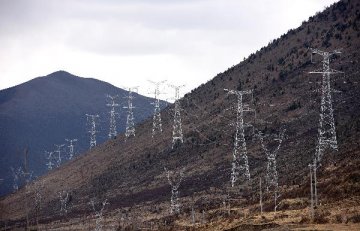
“We are making every effort to realize full coverage nationwide in 2017, which means that price reform on power transmission and distribution (PTD) will cover all power grids in the whole country within next year.” Zhang Manying, inspector of Price Department at National Development and Reform Commission (NDRC), on March 29 provided a timetable for PTD price reform in the press conference.
It means that the pattern to supervise power grid enterprises will be transformed so as to end the “double monopoly” in “buying and selling the power”, laying the foundation for market-oriented power price, according to insiders’ interpretation.
PTD price reform is a key point of power reform
From pilot to popularization, the power price management system is seeing an entirely-new era.
“PTD price reform expands the pilot scope, and based on the six provincial power grids of last year, we have already issued the document to arrange 12 provincial power grids and pilot provinces for national reform on comprehensive power system. Regional power grids expand the pilot scope for PTD price reform. In terms of progress and target, 18 pilots are arranged this year, and we will strive for full coverage nationwide in 2017. All power grids in China will carry out this price reform in next year,” said Zhang.
PTD price reform is a key point in the power system reform and price mechanism reform, which is also the important content of structural reform on power supply side, introduced Shi Zihai, director of Policy Research Department at the NDRC. The overall concept of power price reform is to “control the middle section, and open the two sides” to push the marketization. PTD price reform is the key reform measure to “control the middle section”, with a purpose to transform the supervision pattern on power grid enterprises, end the “double monopoly” in “buying and selling the power”, and lay the foundation for market-oriented power price.
He said: “Simply speaking, the power grid enterprises gained profits mainly through the spread between ‘power-selling price’ and ‘power-buying’ price in the past, but they will obtain ‘wheeling charges’ based on a principle of ‘permitting cost with proper earnings’ after the reform.”
Zhang indicated that governmental sectors mainly set the power buying and selling prices and indirectly supervised their spread in the past, but after the PTD price reform, it will be transformed to a new pattern of direct supervision on all aspects, including PTD revenue, cost and price, based on effective assets of the power grid.
“Cost reduction” is a direct benefit from the reform
The actual benefits from the PTD price reform are also proved by the data.
The first wave of five provinces involved in the reform has a space to reduce the PTD price by 556 million yuan. Meanwhile, “the cost of power grid enterprises is restricted”. Zhang said frankly that PTD price reform reinforces the cost restriction, supervision & review, reduces assets not related to power transmission and distribution through power grid, and lowers some unreasonable costs.
“Last year, cross supervision and review was organized, and related work was carried out for four months, removing assets not related to power transmission and distribution through power grid and lowering some unreasonable costs of round 16 billion yuan. In terms of five provinces, lowered proportion during the review recorded about 16.3 percent,” said he.
As the example, data of Yunnan Province is quite clear, too.
Last year, overall price level in Yunnan was reduced by 3,036 million yuan when compared to selling and buying cost of power grid enterprises in 2014, down by 13.4 percent. The price reducing level was 1.01 points lower than the spread between power buying and selling in 2014, introduced Guo Jixian, head of Price Bureau of Yunnan.
“In terms of social factor, the most direct effect is to reduce the power-using cost of enterprises, power price will reduce due to direct transaction in the power market, and the power consumption cost of enterprises will actually decline. Currently, power supply and demand is quite easing on the whole, under such condition, power consumers having right to make choices can carry out direct transaction with the power generation enterprises to reduce the cost, which will bring direct benefits to power consumers from the policy. In our province, referring to 32 billion electric quantity involved in the market-oriented transaction last year, the power price has been averagely reduced by 0.18 yuan per kilowatt hour, making the involved enterprises lower a burden of 3.5 billion yuan. It is the most direct effect,” said Guo.
Translated by Jelly Yi






















Latest comments